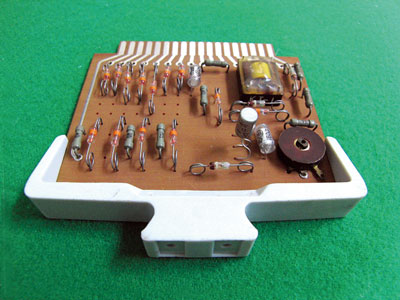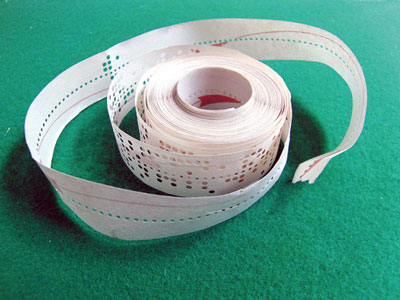

- Home >
- Artifacts of IP Heritage >
- 2010 >
- KT-1: Computing System for Mechanical Translation Experiments
KT-1 : Computing System for Mechanical Translation Experiments



| Manufactured in | 1958〜1959 |
|---|---|
| Manufactured by | Kyushu University |
| Owner | Kyushu University |
| Location of historical materials | School of Engineering Centennial Gallery, Kyushu University, 744 Motooka, Nishi-ku, Fukuoka 819-0395 Japan |
| Visitor information | Open to the public |
| Contact | Department of Advanced Information Technology Tel.+81-92-802-3601 |
KT-1 is a computing system for translation experiments among three languages, Japanese, English and German. It was developed in the late 1950s by Kyushu University.
The direct component method (a forerunner of phrase structure grammar) was used for language logic. The distinguishing feature of the processing system is that it stored the specific characteristics of each language in a table, and used a common program for translation in any direction. The system first analyzes the syntax of an original sentence and converts it to an intermediate language for the translation among English, German and Japanese.
KT-1 adopted a-six-channel paral1el method in binary system where a word was comprised of serial eight characters. KT-1 was sophisticated at its string processing by elaborated search and matching procedures.
A transistor-based dynamic flip-flop system was used for logic circuits. A 12,000 rpm high-speed magnetic drum with 100,000-bit capacity was used for the main memory. A six-bit code was employed for input-output operation. Input-output data were punched on a paper tape.
Its logical design was done by Kyushu University, and the machine was fabricated by Mitsubishi Electric and Hokushin Electric Works Limited. KT-1 was designed as a general purpose computer as well as a mechanical translation system.
A logic package, a magnetic drum of KT-1 and punched paper tapes used for translation experiments are preserved at Kyushu University.
The direct component method (a forerunner of phrase structure grammar) was used for language logic. The distinguishing feature of the processing system is that it stored the specific characteristics of each language in a table, and used a common program for translation in any direction. The system first analyzes the syntax of an original sentence and converts it to an intermediate language for the translation among English, German and Japanese.
KT-1 adopted a-six-channel paral1el method in binary system where a word was comprised of serial eight characters. KT-1 was sophisticated at its string processing by elaborated search and matching procedures.
A transistor-based dynamic flip-flop system was used for logic circuits. A 12,000 rpm high-speed magnetic drum with 100,000-bit capacity was used for the main memory. A six-bit code was employed for input-output operation. Input-output data were punched on a paper tape.
Its logical design was done by Kyushu University, and the machine was fabricated by Mitsubishi Electric and Hokushin Electric Works Limited. KT-1 was designed as a general purpose computer as well as a mechanical translation system.
A logic package, a magnetic drum of KT-1 and punched paper tapes used for translation experiments are preserved at Kyushu University.
